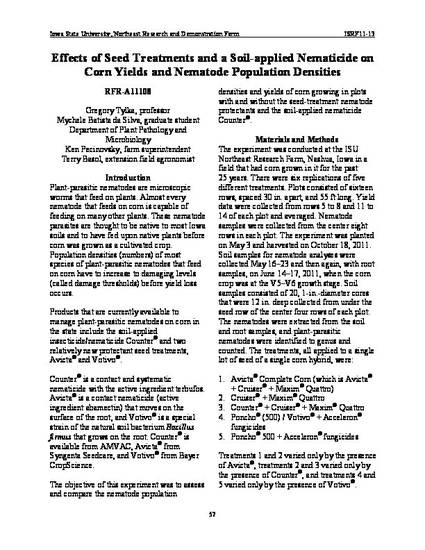
Article
Effects of Seed Treatments and a Soil-applied Nematicide on Corn Yields and Nematode Population Densities
Iowa State Research Farm Progress Reports
Farm
Northeast Research and Demonstration Farm
Extension Number
RFR A11108
Publication Date
1-1-2012
Disciplines
Abstract
Plant-parasitic nematodes are microscopic worms that feed on plants. Almost every nematode that feeds on corn is capable of feeding on many other plants. These nematode parasites are thought to be native to most Iowa soils and to have fed upon native plants before corn was grown as a cultivated crop. Population densities (numbers) of most species of plant-parasitic nematodes that feed on corn have to increase to damaging levels (called damage thresholds) before yield loss occurs.
Copyright Owner
Iowa State University
Copyright Date
2012
Language
en
File Format
application/pdf
Citation Information
Gregory L. Tylka, Mychele Batista Da Silva, Kenneth T. Pecinovsky and Terry L. Basol. "Effects of Seed Treatments and a Soil-applied Nematicide on Corn Yields and Nematode Population Densities" (2012) Available at: http://works.bepress.com/gregory-tylka/31/
